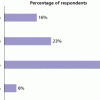Strategic advice to leverage new technologies
Technology is at the heart of nearly every enterprise, enabling new business models and strategies, and serving as the catalyst to industry convergence. Leveraging the right technology can improve business outcomes, providing intelligence and insights that help you make more informed and accurate decisions. From finding patterns in data through data science, to curating relevant insights with data analytics, to the predictive abilities and innumerable applications of AI, to solving challenging business problems with ML, NLP, and knowledge graphs, technology has brought decision-making to a more intelligent level. Keep pace with the technology trends, opportunities, applications, and real-world use cases that will move your organization closer to its transformation and business goals.
Recently Published
With the explosive growth in mobile payments, security becomes a paramount concern. Increasingly, the security focus is turning to biometrics. Biometrics facilitate the automatic authentication of a living person based on his or her unique physiological or behavioral characteristics. Common physical biometrics include fingerprints; hand or palm geometry; retina, iris, or ear shape; or facial characteristics. Behavioral characteristics include signature, voice, and gait. Of this class of biometrics, technologies for signature and voice are the most developed.
Big Data: The Industry Disrupter
Architectural Constructs for Agile Products and Processes
Agile is an iterative method for taking requirements and applying them in a flexible and interactive manner.
Architectural Constructs for Agile Products and Processes
Businesses depend on products to meet customer needs and processes to deliver and support products. Product and process are at the heart of business -- yet are frequently on the periphery of business and enterprise architecture.
Big Agile, Big Change
Industry Data Models
The data warehouse, unlike the other IT systems in an enterprise, is an exclusive data platform with a data model as its backbone. In general, one may conceive an IT system to be a combination of processes and data. However, the data warehouse is only about data, and even the processes within a warehouse are data-centric. This trait of data warehouses prompts different vendors, big and small, to develop data models for every industry (called "industry data models") as a standard offering to decrease the turnaround time in developing data warehouses.
Mobile Devices, Marketing, and Content Management Systems
In past Executive Updates, I have examined various issues relating to executing mobile applications in response to increased consumer demand for access to websites via mobile devices as well as some decision frameworks for determining the best operating system for your organization's mobile applications.













